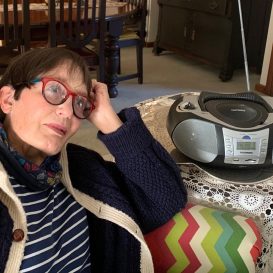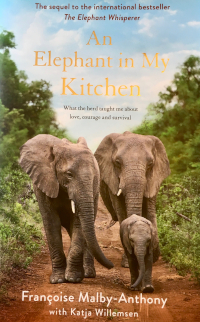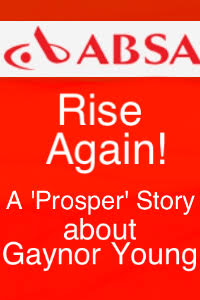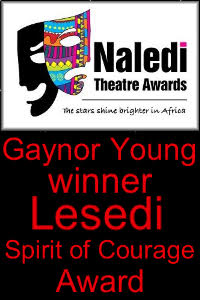 “I have a surprise for you this morning,” B remarked linking her arm through mine. We were walking towards the town centre of Sheringham. “Or rather, Sheringham has a surprise for you. Lots of surprises!”
“I have a surprise for you this morning,” B remarked linking her arm through mine. We were walking towards the town centre of Sheringham. “Or rather, Sheringham has a surprise for you. Lots of surprises!”
She gave a little skip besides me and I laughed at her gaiety.
“Surprises here I come!” I attempted to skip in response but it didn’t quite work. A feeble shuffle landed me in an overgrown flower bed. I returned to my more sedately lope.
B made her way to a certain corner and stood looking around. “Mmmmm, I wonder if we’re in the right place.”
We were joined by a man, another couple and two school children. She smiled. “Yep, I guess we could be.”
 The few people seemed to grow into clusters that soon turned into a crowd. Suddenly they parted, Red Sea-like, to a strange yet wonderfully appearing group of people. There were about eight of them with blackened faces and brightly coloured sunglasses on. Their clothes were a mish-mash of bright materials, with beads, hats, feathers and patchwork. Then to my utter delight, these wonderfully costumed individuals began to ‘dance’. They had sticks in their hands which they beat against each other as they wove in and out in a strangely ritualistic fashion. Their feet tapped, sticks whirred and clashed and their eyes sparkled in their blackened faces. At the same time, a band dressed in a similar fashion played along. The dancers performed their magical rite to the sound of drums, an accordion, mouth organs and a fiddle. They seemed to relish what they were doing, executing what they did with a sure footed ability that I found utterly transfixing.
The few people seemed to grow into clusters that soon turned into a crowd. Suddenly they parted, Red Sea-like, to a strange yet wonderfully appearing group of people. There were about eight of them with blackened faces and brightly coloured sunglasses on. Their clothes were a mish-mash of bright materials, with beads, hats, feathers and patchwork. Then to my utter delight, these wonderfully costumed individuals began to ‘dance’. They had sticks in their hands which they beat against each other as they wove in and out in a strangely ritualistic fashion. Their feet tapped, sticks whirred and clashed and their eyes sparkled in their blackened faces. At the same time, a band dressed in a similar fashion played along. The dancers performed their magical rite to the sound of drums, an accordion, mouth organs and a fiddle. They seemed to relish what they were doing, executing what they did with a sure footed ability that I found utterly transfixing.
“I told you that Sheringham had surprises in store for you today. There are more to come!” B enthused. “It’s Sheringham’s ‘Potty’ weekend!” At my incredulous look, she added: “Well, the dancing is a bit bonkers.”
“Tell me about them. Come on, B, spill the beans!”
 These were the Morris Dancers, I learned.
These were the Morris Dancers, I learned.
Morris Dances have been danced for hundreds of years, being passed down through the generations in the villages of rural England. There are usually six or eight dancers arranged in two lines or in a circle facing each other. Throughout that morning, I was enthralled by different troupes presenting an assortment of dances. Some carried white handkerchiefs that they shook and twirled. Others had short sticks that they would bang against each other as they danced. Some dancers had bell-pads tied at their knees, which gave off a loud and cheerful rhythm as they moved.
 What a fantastic form of dance, passed down through the ages. I watched a group of men twirling white handkerchiefs in the air, as they did neat little two steps. I tried to picture South African men doing a similar thing. I imagined Francois Pienaar, South Africa’s rugby hero, spinning around carrying a white hankie in his meaty fist. What a hilarious image! That is all it was – an image. There is no way that South Africans would ever do something like Morris Dancing, I thought.
What a fantastic form of dance, passed down through the ages. I watched a group of men twirling white handkerchiefs in the air, as they did neat little two steps. I tried to picture South African men doing a similar thing. I imagined Francois Pienaar, South Africa’s rugby hero, spinning around carrying a white hankie in his meaty fist. What a hilarious image! That is all it was – an image. There is no way that South Africans would ever do something like Morris Dancing, I thought.
And then I drew in a short, sharp breath.
Of course, South Africa had it’s own form of ‘Morris Dancing’! Every year, on the 1st January, the streets of Cape Town come alive with colour and the sound of trumpets as the Cape Minstrels take to the streets in a style all their own. Tweede Nuwe Jaar (Second New Year) is an age old Cape tradition. Thousands of brightly-clothed people march through the highways and byways of Cape Town. This raffish group entertain the crowd through singing, dancing and playing a number of musical instruments. This festival has become an integral part of Cape Town’s popular culture.
 This tradition emanates from slavery in South Africa, going back to the early 1600’s! Slaves from different parts of the world formed a real melting pot of cultures. Being such a mixed blend of people, this resulted in the Creole society in South Africa. This amalgamation of slaves eventually created a culture all their own. These were people to whom song and dance played an important part.
This tradition emanates from slavery in South Africa, going back to the early 1600’s! Slaves from different parts of the world formed a real melting pot of cultures. Being such a mixed blend of people, this resulted in the Creole society in South Africa. This amalgamation of slaves eventually created a culture all their own. These were people to whom song and dance played an important part.
 In 1674, the governor at the time, Isbrand Goske, desired the slaves to be part of the celebration on 1 January. To their delight, the slaves were able to give up work for the day. They were offered money, clothing and tobacco. Cannons were fired from the Castle of Jan van Riebeeck, as well as from ships anchored at Table Bay. Street parades and serenades formed part of the celebration. The day off must have been blissful for the slaves!
In 1674, the governor at the time, Isbrand Goske, desired the slaves to be part of the celebration on 1 January. To their delight, the slaves were able to give up work for the day. They were offered money, clothing and tobacco. Cannons were fired from the Castle of Jan van Riebeeck, as well as from ships anchored at Table Bay. Street parades and serenades formed part of the celebration. The day off must have been blissful for the slaves!  By the early nineteenth century, New Year was the most joyous occasion for the slaves as it gave them the opportunity to engage in festivities. It came as no surprise that when slavery was abolished in 1834 and the apprenticeships ended in 1838, it was greeted with much celebration, street processions, music and songs. This celebration formed the foundation on which the subsequent New Year festival of Cape Town developed.
By the early nineteenth century, New Year was the most joyous occasion for the slaves as it gave them the opportunity to engage in festivities. It came as no surprise that when slavery was abolished in 1834 and the apprenticeships ended in 1838, it was greeted with much celebration, street processions, music and songs. This celebration formed the foundation on which the subsequent New Year festival of Cape Town developed.
 Their presence at the State of the Nation address of President Nelson Mandela and the inauguration of the Mayor of the city in 1998 further emphasised the fact that they are recognised as an essential part of the culture of Cape Town.
Their presence at the State of the Nation address of President Nelson Mandela and the inauguration of the Mayor of the city in 1998 further emphasised the fact that they are recognised as an essential part of the culture of Cape Town.
So my day in Sheringham with the Morris Dancers led to a reminder of the incredibly dressed and extraordinary dancers of our own in Cape Town.
Isn’t dance an amazing thing? Throughout the ages people have danced. And they will continue to do so. Dance is a necessity to life!
Beth Jones sums it up perfectly, saying:
“To dance is to reach for a word that doesn’t exist,
To sing the heart-song of a thousand generations,
To feel the meaning of a moment in time.”





















Great subject and so well written. Enjoyed it and have learnt. From it. Well done,All love Mums.xxxx
Ohhhh, Mums, how I wish you had been with me to experience the joy of the Morris Dancers. What an experience!!!
Gently I kiss your beautiful eyes
Gaynor
Our carnival is so very special to all of us but do you know…. I was blissfully unaware of the origins. Thanks G..X
Yeah, Jans, I was too. Wish you could have seen the Morris Dancers. What an experience!
With a smile I kiss your eyes
Gaynor
Lovely blog Gaynor!
I thought for a minute that that was a bearded John Royce in the last picture :-).
Hope you are well
xx
Yes, thanks, Scotty. I am fresh back from having spent a lovely time in England. But there is no place like one’s own bed, not so???
The Morris Dancers were one of many of the joys I experienced!
With a smile I kiss your eyes
Gaynor
Comments are closed.